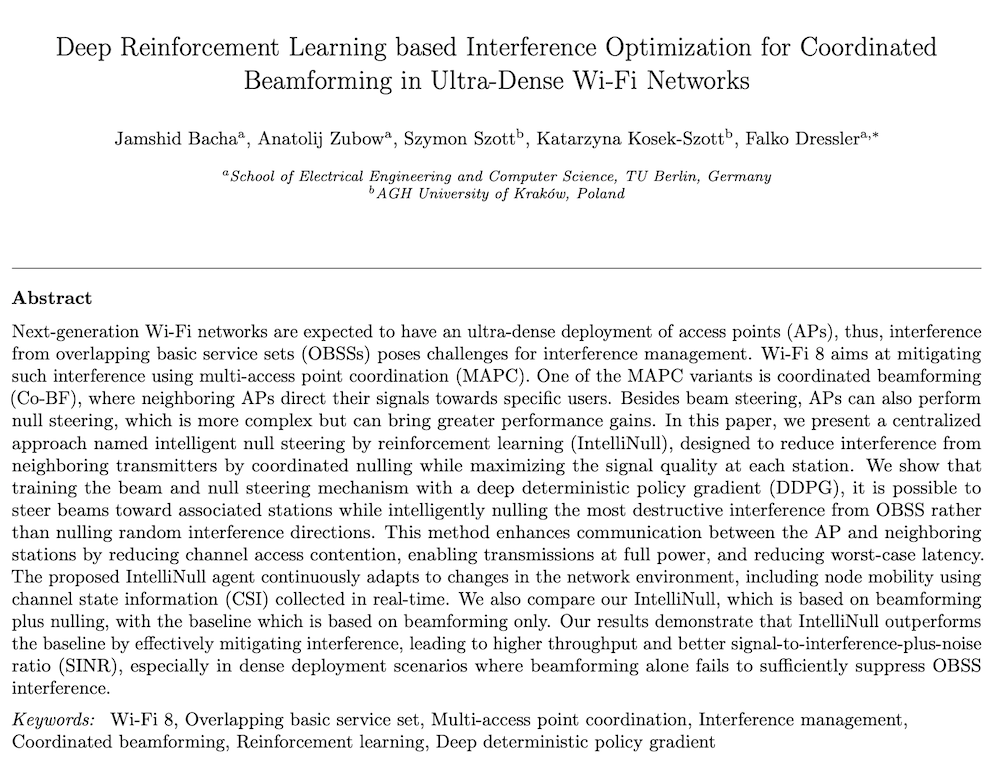Literature Database Entry
gulec2021droplet
Fatih Güleç and Baris Atakan, "A Droplet-Based Signal Reconstruction Approach to Channel Modeling in Molecular Communication," IEEE Transactions on Molecular, Biological and Multi-Scale Communications, vol. 7 (1), pp. 64–68, March 2021.
Abstract
In this article, a novel droplet-based signal reconstruction (SR) approach to channel modeling, which considers liquid droplets as information carriers instead of molecules in the molecular communication (MC) channel, is proposed for practical sprayer-based macroscale MC systems. These practical MC systems are significant, since they can be used in order to investigate airborne pathogen transmission with biological sensors due to the similar mechanisms of sneezing/coughing and sprayer. Our proposed approach takes a two-phase flow which is generated by the interaction of droplets in liquid phase with air molecules in gas phase into account. Two-phase flow is combined with the SR of the receiver (RX) to propose a channel model. The SR part of the model quantifies how the accuracy of the sensed molecular signal in its reception volume depends on the sensitivity response of the RX and the adhesion/detachment process of droplets. The proposed channel model is validated by employing experimental data.
Quick access
Original Version ![]() (at publishers web site)
(at publishers web site)
BibTeX ![]()
Contact
Fatih Güleç
Baris Atakan
BibTeX reference
@article{gulec2021droplet,
author = {G{\"{u}}le{\c{c}}, Fatih and Atakan, Baris},
doi = {10.1109/TMBMC.2020.3043484},
title = {{A Droplet-Based Signal Reconstruction Approach to Channel Modeling in Molecular Communication}},
pages = {64--68},
journal = {IEEE Transactions on Molecular, Biological and Multi-Scale Communications},
issn = {2332-7804},
publisher = {IEEE},
month = {3},
number = {1},
volume = {7},
year = {2021},
}
Copyright notice
Links to final or draft versions of papers are presented here to ensure timely dissemination of scholarly and technical work. Copyright and all rights therein are retained by authors or by other copyright holders. All persons copying this information are expected to adhere to the terms and constraints invoked by each author's copyright. In most cases, these works may not be reposted or distributed for commercial purposes without the explicit permission of the copyright holder.
The following applies to all papers listed above that have IEEE copyrights: Personal use of this material is permitted. However, permission to reprint/republish this material for advertising or promotional purposes or for creating new collective works for resale or redistribution to servers or lists, or to reuse any copyrighted component of this work in other works must be obtained from the IEEE.
The following applies to all papers listed above that are in submission to IEEE conference/workshop proceedings or journals: This work has been submitted to the IEEE for possible publication. Copyright may be transferred without notice, after which this version may no longer be accessible.
The following applies to all papers listed above that have ACM copyrights: ACM COPYRIGHT NOTICE. Permission to make digital or hard copies of part or all of this work for personal or classroom use is granted without fee provided that copies are not made or distributed for profit or commercial advantage and that copies bear this notice and the full citation on the first page. Copyrights for components of this work owned by others than ACM must be honored. Abstracting with credit is permitted. To copy otherwise, to republish, to post on servers, or to redistribute to lists, requires prior specific permission and/or a fee. Request permissions from Publications Dept., ACM, Inc., fax +1 (212) 869-0481, or permissions@acm.org.
The following applies to all SpringerLink papers listed above that have Springer Science+Business Media copyrights: The original publication is available at www.springerlink.com.
This page was automatically generated using BibDB and bib2web.







